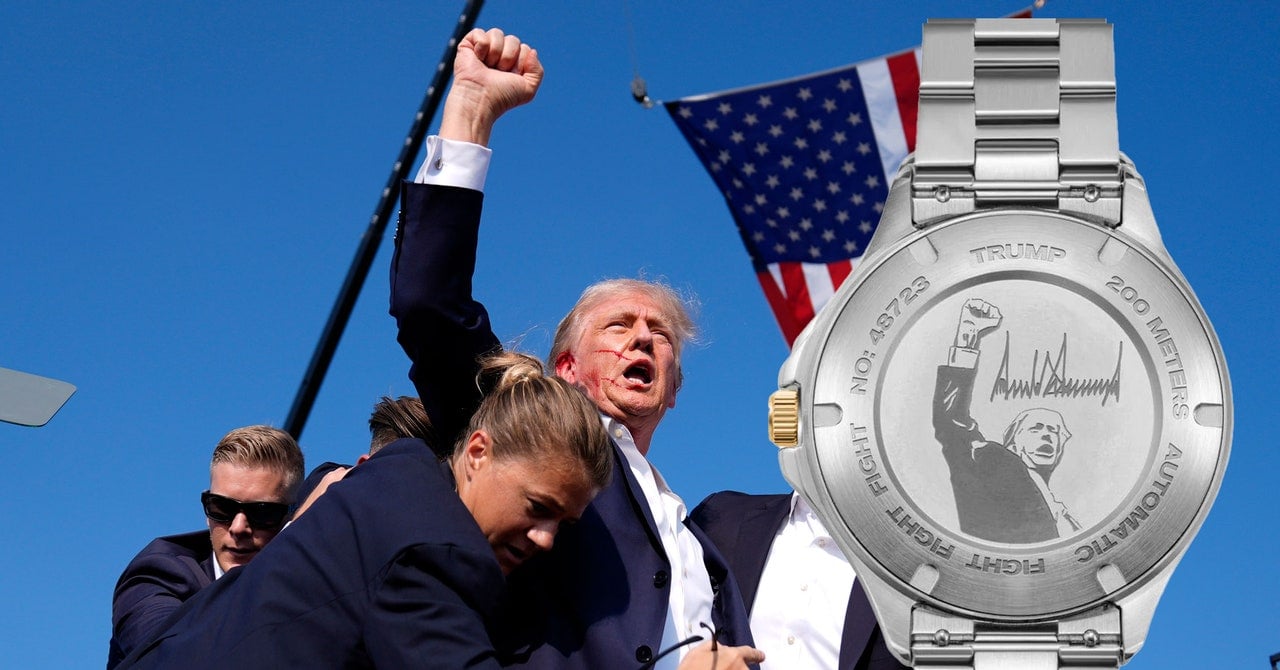The company behind Trump Watches prominently features an iconic image of the presidential candidate on its timepieces. There’s one big problem: It’s not allowed to.
…
According to the Associated Press, though, TheBestWatchesonEarth LLC advertised a product it can’t deliver, as that image is owned by the 178-year-old news agency. This week, the AP told WIRED it is pursuing a cease and desist against the LLC, which is registered in Sheridan, Wyoming. (The company did not reply to a request for comment about the cease and desist letter.)
Evan Vucci, the AP’s Pulitzer Prize–winning chief photographer, took that photograph, and while he told WIRED he does not own the rights to that image, the AP confirmed earlier this month in an email to WIRED that it is filing the written notice. “AP is proud of Evan Vucci’s photo and recognizes its impact,” wrote AP spokesperson Nicole Meir. “We reserve our rights to this powerful image, as we do with all AP journalism, and continue to license it for editorial use only.”



being an impression or an engraving of photograph is pretty transformative. This claim is a loser in court.
Changing medium is not transformative if you’re explicitly copying the subject matter of the original.
Edit: one thing that is funny is that there’s a note in the picture of the article that they can’t use a photo of the back of the watch for some watch review site because they don’t have the rights from the AP. In that case, however, they’re wrong because a picture of the back of the watch to make a point that the watch is similar to the original photograph is, hilariously, transformative. It, in conjunction with the article, has a completely different meaning than the original image and is fair use. If you used the image just to talk about the event or about Trump though, that would not be fair use because you’re just using the image’s composition in its entirety.
I’m gonna have to agree to disagree with you on that. There are far too many example of just that in everyday life.
Unless you are a judge on the case your disagreement doesn’t matter.
And the only examples that matter is case law.
Well I agree with you on that but unless you have verifiable credentials as an authority on the subject then your judgement and seeming disagreement on the subject also doesn’t matter. To go around cavalierly making unverfiable claims (like I’m also responding to) about the judgements over intellectual property law does nothing good for anyone, but leaves many susceptible (including yourself) to Dunning–Kruger and confirmation bias.
So if I produce a movie based on a book without a license, I would be ok in your mind right?
This would be like producing an engraving based on a altered photograph, and as I said earlier, it would be worth consulting with an IP attorney.
So are you saying yes or no that changing the medium from a book to a movie, which completely alters how the work is consumed, is fair use transformative or not? Because it would be very informative to how far off the copyright test that the supreme court has handed down you are.
See https://en.m.wikipedia.org/wiki/Rogers_v._Koons for changes in media (photograph to sculpture) with alterations and https://en.m.wikipedia.org/wiki/Andy_Warhol_Foundation_for_the_Visual_Arts,_Inc._v._Goldsmith for a more recent case where an upper body back and white photograph was cropped to only included a head, transformed to silk screen, and colored by hand if you want a clear idea here as to whether minor cropping and figure redrawing for engraving in a different medium is considered transformative(it is not).